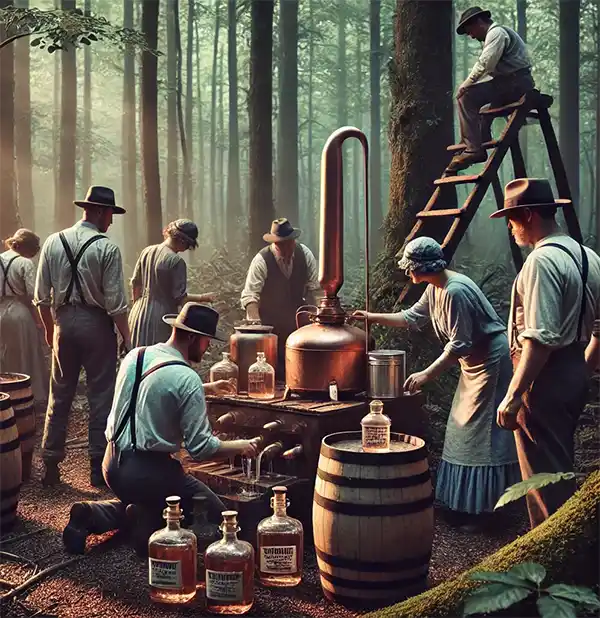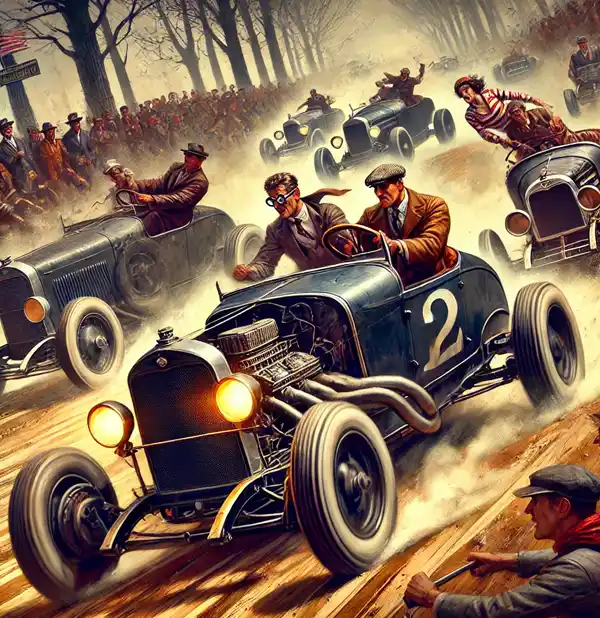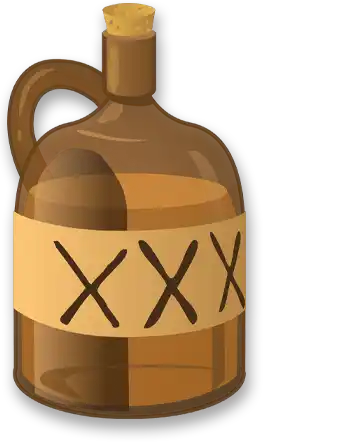A Toast to the Outlaws of the Roaring Twenties
Raise a glass (legally, of course) to National Bootlegger’s Day, a celebration of the spirited individuals who kept America’s thirst quenched during the dry years of Prohibition. From bathtub gin to high-speed car chases, bootleggers weren’t just criminals—they were innovators, entrepreneurs, and, in many cases, legends. Let’s dive into the fascinating and often absurd world of bootlegging, where creativity met crime in the pursuit of a stiff drink.
 A Brief History of Prohibition and Bootlegging
A Brief History of Prohibition and Bootlegging
Prohibition officially kicked off in 1920 with the enactment of the 18th Amendment and the Volstead Act, banning the manufacture, sale, and transportation of alcohol in the United States. The goal? To promote morality and reduce crime. The result? Quite the opposite.
Despite the noble intentions, prohibition became one of the greatest social experiments that backfired spectacularly. Instead of curbing drinking habits, it gave rise to a thriving underground market where liquor flowed more freely than ever—provided you knew where to look. Across the nation, Americans from all walks of life found themselves playing a part in the clandestine alcohol trade, from small-time moonshiners in rural areas to major crime syndicates in big cities.
The ingenuity of bootleggers knew no bounds. They crafted hidden compartments in cars, developed elaborate signaling systems to avoid raids, and even enlisted the help of corrupt officials to stay one step ahead of the law. Some families turned their homes into covert distilleries, with children acting as lookouts while their parents brewed up the latest batch of moonshine in the back shed.
Meanwhile, speakeasies became the era’s worst-kept secret. Password-protected and often tucked away behind false walls, these hidden bars were not only places to drink but cultural hubs where jazz music flourished and social norms were left at the door. For many, a visit to a speakeasy wasn’t just about sipping contraband whiskey—it was about experiencing a slice of rebellion.
What started as a legal crackdown quickly spiraled into a chaotic tug-of-war between law enforcement and the American people. By the end of Prohibition in 1933, the sheer volume of illegal booze operations and the resulting organized crime had turned the country’s "noble experiment" into a cautionary tale of unintended consequences.
Bootleggers stepped into the void, smuggling alcohol from Canada, the Caribbean, and beyond. Others set up clandestine stills in basements, barns, and even city apartments. Speakeasies—secret bars often hidden behind innocuous storefronts or basements—popped up in every major city, becoming hubs of jazz, flappers, and questionable cocktails.
The Stars of the Show
Bootlegging wasn’t just a hustle; it was an art form, and some individuals became legends in the trade:
- Al Capone: The most infamous name in organized crime, Capone built an empire supplying Chicago with illicit booze. His operations reportedly earned over $100 million annually, proving that crime does pay—at least for a while.
- "The Rum Runners": These daring smugglers used fast boats to outrun the Coast Guard, ferrying rum and other spirits from the Caribbean to thirsty Americans. Their exploits laid the groundwork for modern NASCAR, as bootleggers fine-tuned cars for speed and agility.
- Maggie Bailey: Known as "The Queen of the Mountain Bootleggers," Maggie operated in the hills of Kentucky, using her earnings to support her community. A true outlaw with a heart of gold.
The Science (and Horror) of Bootleg Booze
Desperate times called for desperate measures, and the results were… mixed. Homemade spirits ranged from surprisingly palatable to downright dangerous.
- Bathtub Gin: Made with whatever was handy, bathtub gin often tasted like a mix of pine needles and regret.
- Moonshine: This potent brew packed a punch, but an improperly distilled batch could cause blindness—a high price to pay for a buzz.
- "The Real McCoy": For those who could afford it, genuine imported spirits—dubbed "The Real McCoy" after rum-runner Bill McCoy—were the gold standard.
 How Bootlegging Shaped America
How Bootlegging Shaped America
The bootlegging era left a lasting legacy on American culture. It fueled the rise of organized crime, introduced the nation to modern-day cocktails, and gave us some of the most colorful figures in history. Bootleggers didn’t just transport alcohol—they changed the way Americans think about ingenuity, rebellion, and even automobiles.
One of the most unexpected outcomes of bootlegging was its role in laying the groundwork for NASCAR. Bootleggers needed fast, agile cars to outrun law enforcement, and they became experts in modifying vehicles for speed and stealth. These souped-up cars, driven by daredevil bootleggers, eventually led to organized races and the birth of stock car racing—a legacy that lives on in NASCAR events today.
Beyond cars and cocktails, the bootlegging era also reshaped America’s social fabric. The speakeasy culture broke down traditional social barriers, creating spaces where men and women, rich and poor, could mingle over a drink. This spirit of inclusivity and rebellion paved the way for new cultural norms and trends that extended far beyond the Prohibition years.
The rebellious spirit of the Roaring Twenties lives on, and many of today’s craft distilleries owe a debt of gratitude to the bootleggers who paved the way—often quite literally, carving paths through remote forests to evade the law. Whether it’s a nod to their innovation or an appreciation for their audacity, the legacy of bootlegging is woven into the fabric of American history.
How to Celebrate National Bootlegger’s Day
Here are a few (legal) ways to honor the legacy of America’s most spirited entrepreneurs:
- Raise a Glass: Mix up a classic Prohibition-era cocktail, like a Bee’s Knees or a Sidecar, and toast to the ingenuity of the past.
- Visit a Speakeasy: Many modern bars emulate the hidden charm of speakeasies. Find one near you and enjoy the ambiance.
- Learn the History: Watch documentaries or read about the Prohibition era to fully appreciate the grit and gall of bootleggers.
- DIY (Legally): Try your hand at brewing beer or distilling spirits—just make sure you follow the laws this time!
Fun Bootlegging Facts
Before we dive into the quirks and curiosities of bootlegging, let’s take a moment to appreciate the sheer audacity of the trade. Bootleggers weren’t just lawbreakers; they were pioneers of illicit ingenuity, finding ways to outsmart authorities with flair and often a touch of humor. Their stories are filled with unexpected twists, clever schemes, and a dash of chaos that makes the era endlessly fascinating. Now, let’s uncork some fun facts!
- The term "bootlegging" originated during the Civil War, when soldiers smuggled liquor in their boots. By Prohibition, it applied to anyone smuggling alcohol.
- Despite the risks, it’s estimated that 60-70% of Americans drank alcohol during Prohibition.
- In New York City alone, there were an estimated 30,000 speakeasies by 1927.
- The government poisoned industrial alcohol to deter bootleggers. The result? Over 10,000 deaths. Talk about overkill.
National Bootlegger’s Day is a reminder that, for better or worse, human ingenuity knows no bounds. While Prohibition may have been a dry spell, it certainly wasn’t dull. So, let’s raise a glass to the rebels who risked it all to keep spirits high and glasses full. Cheers!
Please Share our Content






 A Brief History of Prohibition and Bootlegging
A Brief History of Prohibition and Bootlegging How Bootlegging Shaped America
How Bootlegging Shaped America








 "Sláinte!" is a traditional Irish expression used as a toast, equivalent to "Cheers!" in English.
"Sláinte!" is a traditional Irish expression used as a toast, equivalent to "Cheers!" in English.